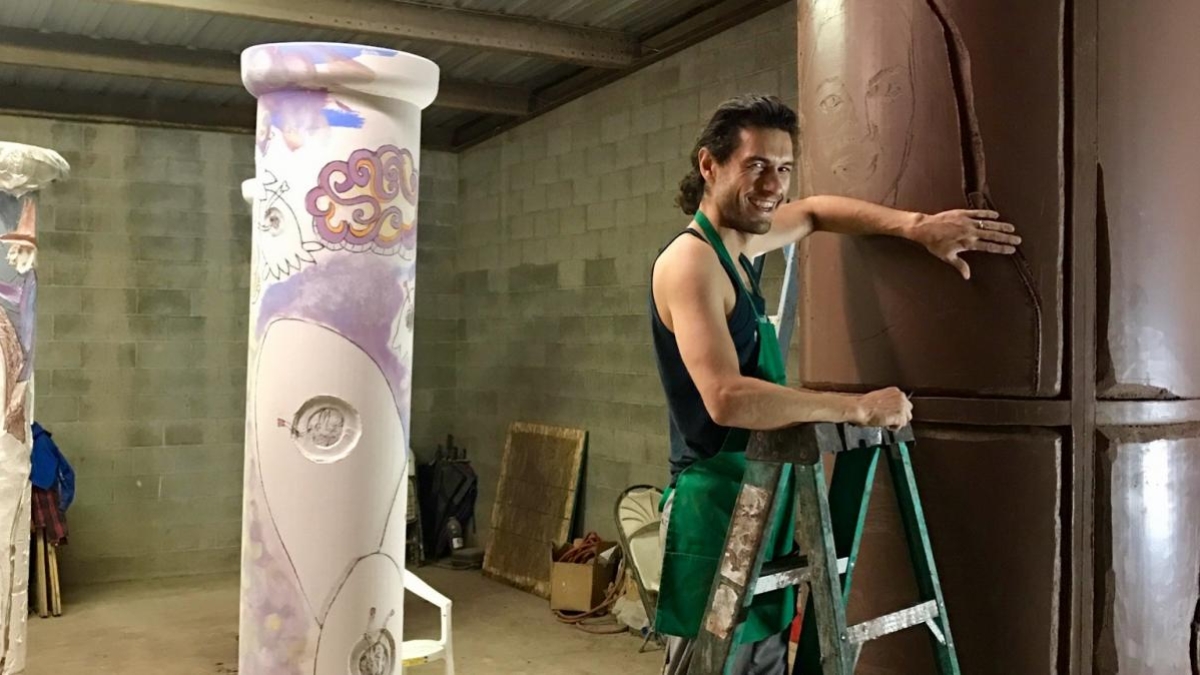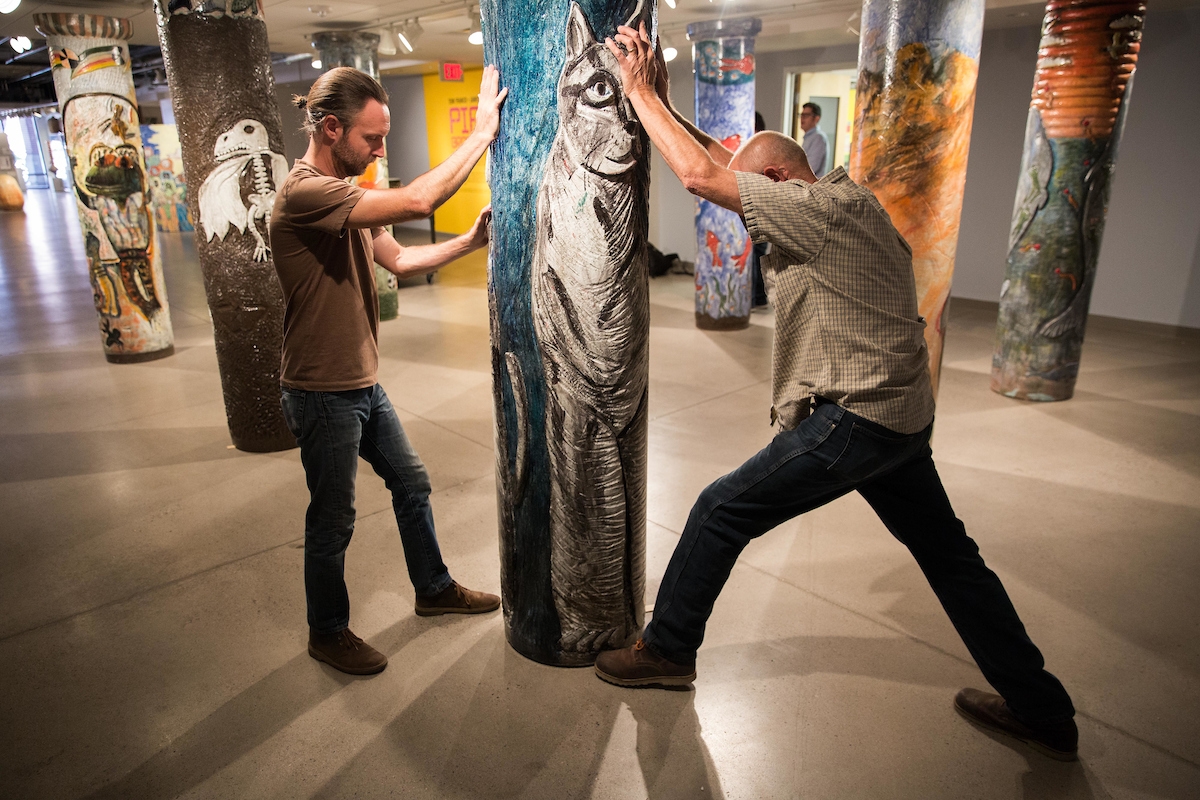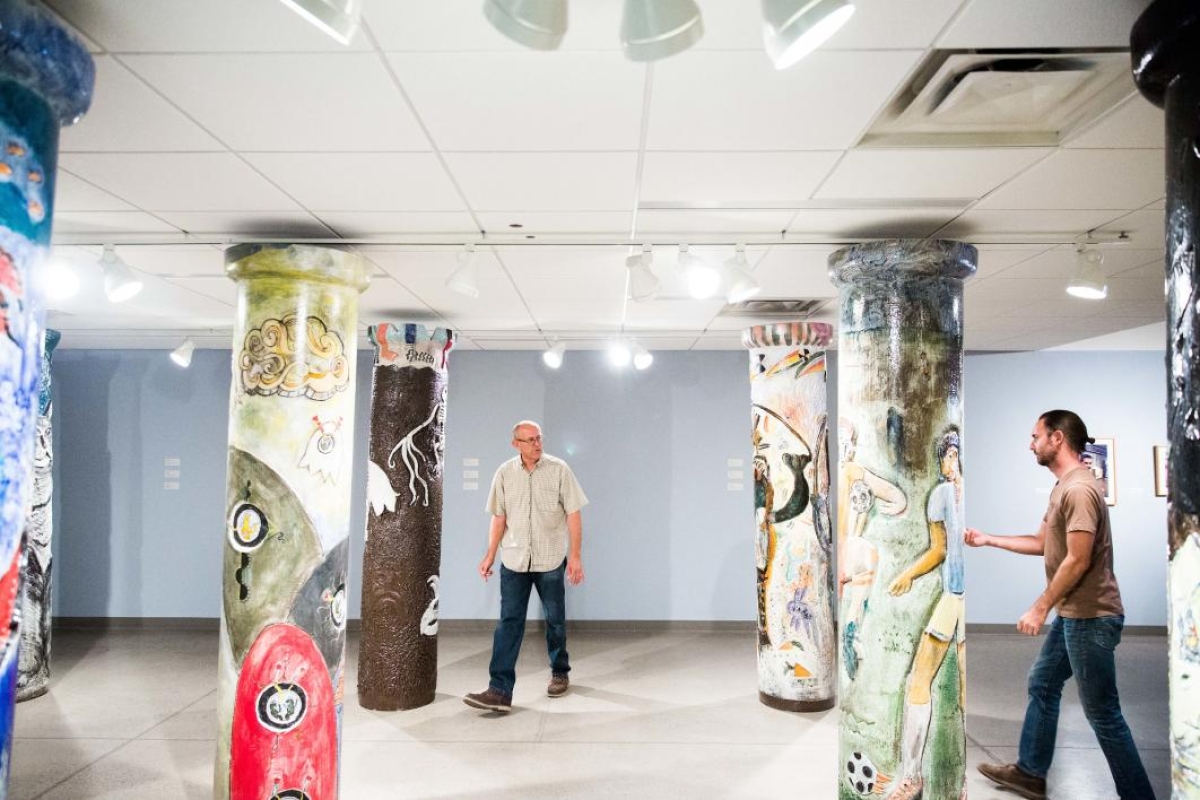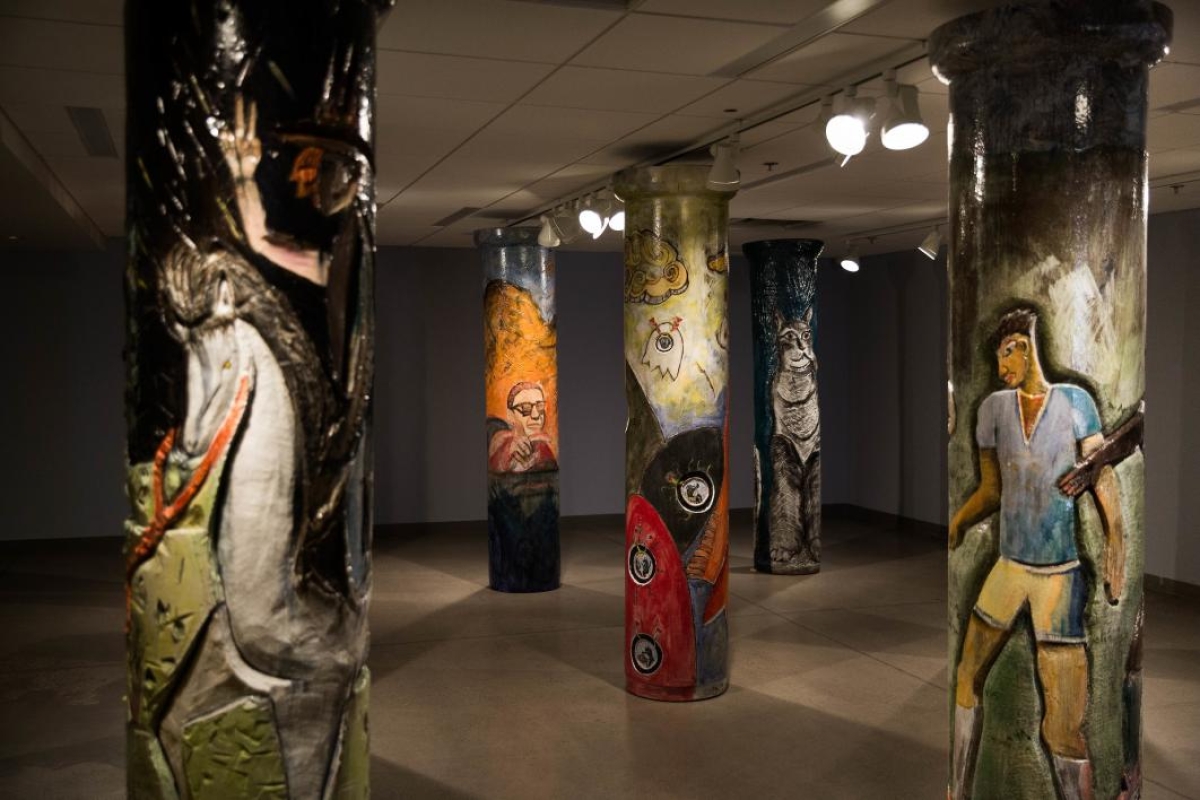Editor's note: This story is being highlighted in ASU Now's year in review. To read more top stories from 2017, click here.
Actor James Franco has made a successful career from being wildly unpredictable, playing a vast array of characters from James Dean to a supervillian in "Spider-Man" to a drug dealer named Alien.
His next project has to do with pipes — no, it’s not what you’re thinking — though it does have to do with the gutter.
The famous actor, writer, director and producer is collaborating with his brother, full-time sculptor Tom (pictured above), in a new exhibit at the ASU Art Museum Ceramics Research Center. It makes its national debut on Saturday, June 17.
“Pipe Brothers: Tom and James Franco” is an exhibition consisting of nine large carved and painted ceramic sewer pipes, which measure seven and a half feet tall and weigh nearly 750 pounds apiece. It runs through Sept. 23.
An artist’s reception is being planned for the beginning of the school semester.
“We love exhibits like these because an artist like James Franco the public knows and this is so unexpected,” said Garth Johnson, curator of ceramics at the ASU Art Museum. “Artists are doing incredible work with ceramics and they are helping to shine a light on the art ecosystem, and that’s a win for me.”
Johnson was quick to point out that Franco’s brother Tom is a respected and dedicated artist from the Bay Area who learned his craft at the California College of Arts in Oakland under the tutelage of veteran artist and textbook author John Toki.
“Tom Franco is an up-and-coming, dynamic Renaissance man who has tremendous drive and talent,” Toki said. “He also has a unique artistic bent.”
The Franco brothers frequently work together, but none of their projects has been as unusual or as ambitious as “Pipe Brothers.”
To create the artwork, the Francos — along with members of the Firehouse Art Collective, a non-profit Tom founded that provides affordable spaces where artists can live, work and collaborate — made frequent visits over the course of a year to Mission Clay Products, a Phoenix-based factory that produces the ceramic pipes, which are more durable and sustainable than plastic.
The Franco brothers had to adjust their working schedules to fit into the factory’s rhythms and equipment.
“We were easily putting in 14-hour days,” Toki said. “We’d have to flood the floor with water so the ceramic wouldn’t crack. It takes a strong soul to endure that, especially in the Arizona heat.”
The countless hours of carving and painting resulted in pipe pieces depicting a rabbit jumping rope, James Dean behind the wheel of his Porsche, and people playing soccer.
Timelapse of the installation for “Pipe Brothers: Tom and James Franco” at the ASU Art Museum Ceramics Research Center.
Under the direction of owner Bryan Vansell, Mission Clay has worked with ceramic artists for more than three decades as part of its arts and industry program, which allows artists to engage with the industrial ceramic fabrication process.
Tom Franco credits Mission Clay for inspiring him to work outside his comfort zone.
“There were so many firsts for me with the medium of clay — the size of the sculptures, working conditions, immersion in process,” Franco said in an ASU press release. “I’ve completely fallen into obsession with the cylindrical form; it’s like finding primal shape that we can’t live without.”
After the exhibition at ASU, the pipes will tour other cities and eventually will live on as public art, Johnson said.
“It’s ideal for public art because they’re durable,” he said. “They’re made to last hundreds of years.”
For hours, directions and parking, visit asuartmuseum.asu.edu.
Top photo: The ASU Art Museum Ceramics Research Center in Tempe is hosting "Pipe Brothers: Tom and James Franco," an exhibition of nine large carved and painted sewer pipes. The exhibit starts Saturday and runs through Sept. 23. Tom Franco (pictured above) is a full-time sculptor. Photo courtesy of ASU Art Museum Ceramics Research Center
More Arts, humanities and education
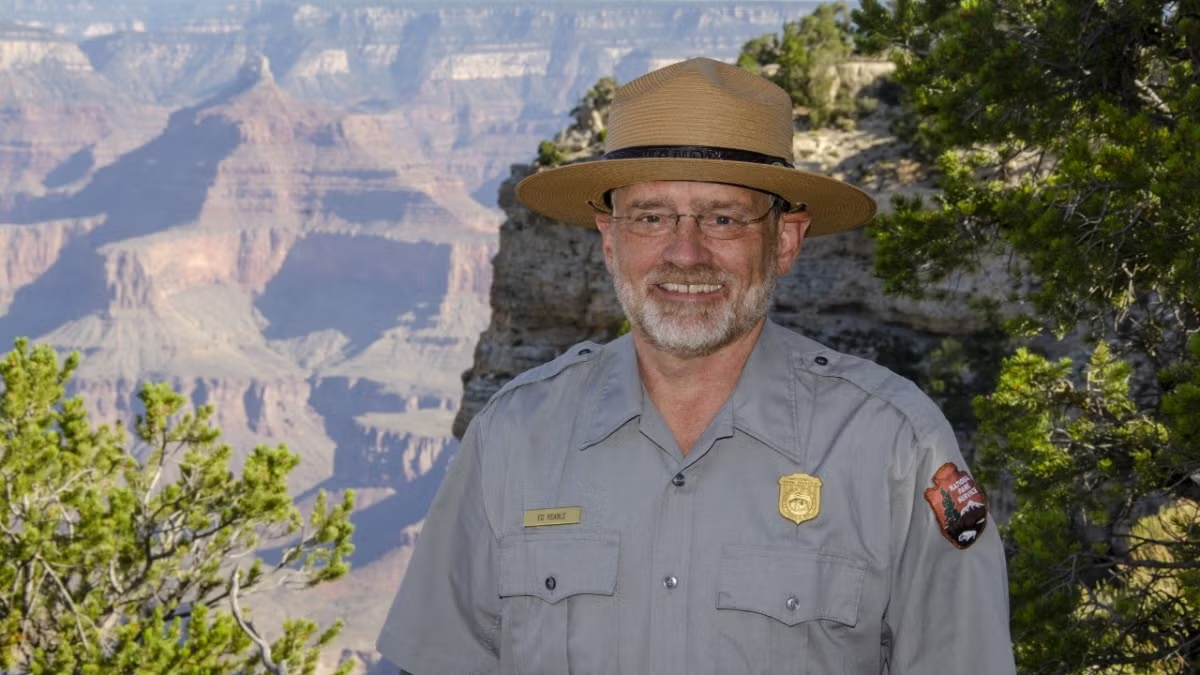
Grand Canyon National Park superintendent visits ASU, shares about efforts to welcome Indigenous voices back into the park
There are 11 tribes who have historic connections to the land and resources in the Grand Canyon National Park. Sadly, when the park was created, many were forced from those lands, sometimes at…
ASU film professor part of 'Cyberpunk' exhibit at Academy Museum in LA
Arizona State University filmmaker Alex Rivera sees cyberpunk as a perfect vehicle to represent the Latino experience.Cyberpunk is a subgenre of science fiction that explores the intersection of…

Honoring innovative practices, impact in the field of American Indian studies
American Indian Studies at Arizona State University will host a panel event to celebrate the release of “From the Skin,” a collection over three years in the making centering stories, theories and…
